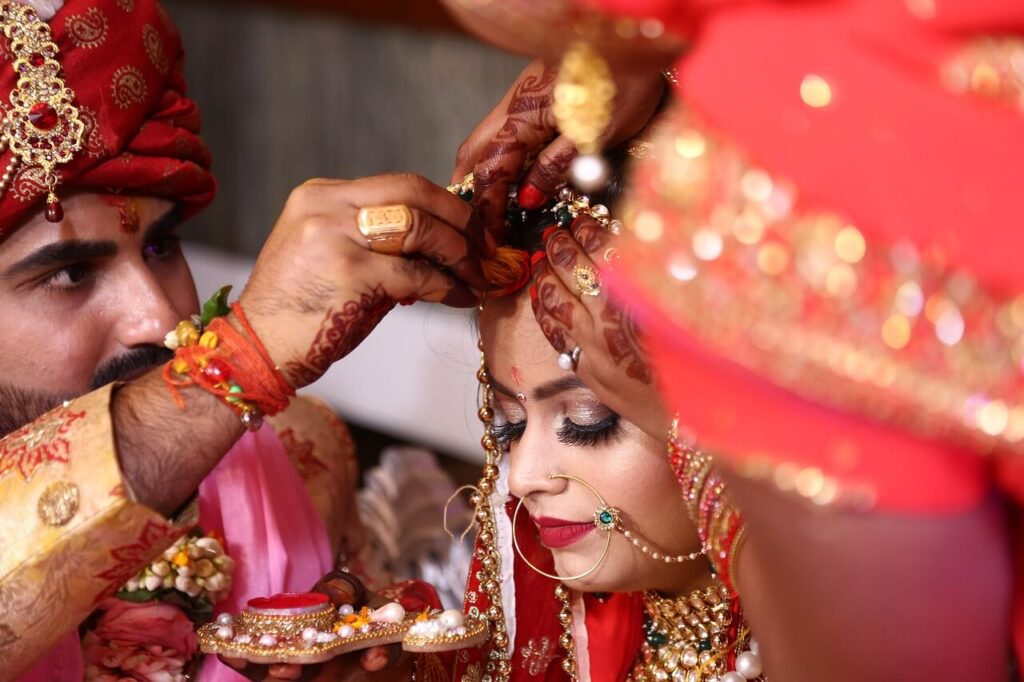
In the perpetual quest of boasting about ‘Bharateeya Sanskriti’ at every possible forum, Indians never miss a chance to tom-tom their so-called cultural values and the moral superiority ensuing from it. Indians love to wax poetic about how their society’s bedrock—family, religion, and tradition—shields them from the “decadent” pitfalls of the West. Chief amongst these boasts is the low divorce rate in India, hovering around a measly 1% of marriages, compared to the West’s chaotic 40-50% in places like the USA. This is regarded as the ultimate proof of the very special nature of Indian marriages. This is nothing but a load of bullshit. In the following, I will puncture the balloon of the aura behind Indian marriages.
The Quintessentially Indian Trait of ‘anything goes if you endure it’
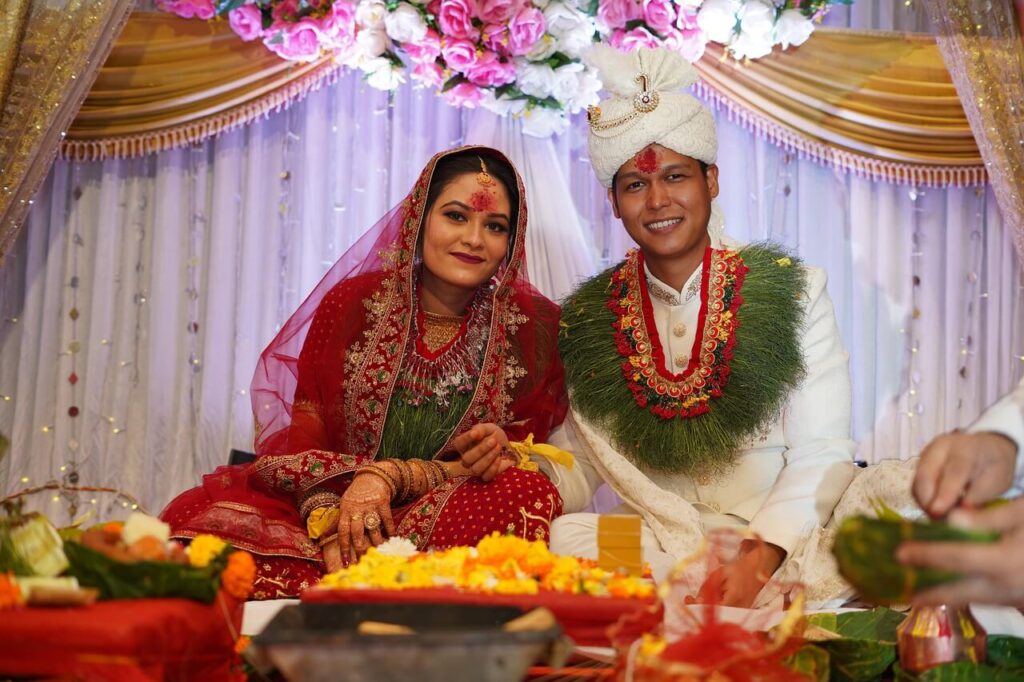
Indian marriage is a social contract between families, a business arrangement disguised with the glittering red and gold of wedding rituals, and a convenient way to make you comply with societal norms under the banner of socio-cultural duty or religious sanctity. Scratch beneath the surface of the heavily photoshopped wedding albums and the orchestrated Bollywood-style ceremonies courtesy Karan Johar’s films, and you will find a festering void: men and women stuck together not by love, not by respect, not even by compatibility, but by inertia.
Thus, Indian marriage is not a fortress of love, but a mirror held up to India’s broader national psyche—a psyche where apathy is mistaken for patience and inertia masquerades as stability. I will explain this with a painful historical example.
Have you ever wondered why Indians never rose en masse in revolt against all sorts of foreign invaders and the tyrants, despite suffering centuries (1400 years) of subjugation and atrocities? The emphasis is on the word ‘en masse’, as local-level resistance was indeed there. I am emphasizing en masse because had they risen en masse, the enemies would have fallen short of swords, arrows, spears or even bullets. Indians could have overwhelmed them by their sheer numerical superiority even if the citizenry did not have much knowledge of the art of warfare. It is not that the Indians were cowards by nature or that most of them did not know how to wield weapons. They never revolted because they did not want to go out of the way of their ‘routine life’ and exert themselves for a change. They were so used to their monotonous existences that they would not do anything to disturb it. That’s how the Indians made it into a habit of enduring ignominy, insult, atrocities or inconveniences.
That is precisely the reason that in the post-independence era also, in spite of the fact that governments after governments have consistently failed to deliver and yet people still hope against hope that, in the next election, they would finally find their much-awaited Taaranhaar (messiah). Had you not heard the clarion call of Garibi Hatao more than half a century ago in 1971—well, poverty is still very much there in all its ugly nakedness so much so that 80.6 crore people still survive on free rations.
The same thing happens with Indian marriages also. The Indian marriage, in its modern façade, is not a stable institution—it is a stagnant one. It lasts not because Indians have built an evolved model of companionship but because they are too entangled in their fear of change, too invested in social approval, and too indifferent to their own misery. The so-called “sanctity” of marriage is in fact a hollow edifice propped up by habit, cowardice, and grotesque social machinery that rewards endurance of bullshit.
Stability by Compulsion
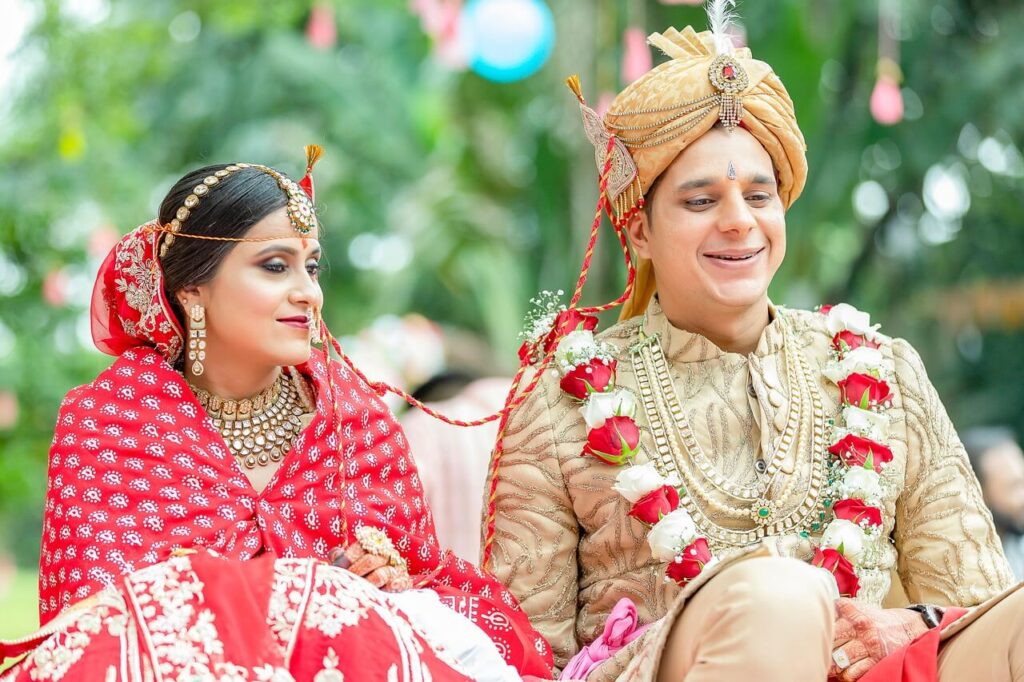
Indian apologists love to sneer at Western divorce rates. “Look at them,” they scoff, “changing partners like clothes. They don’t know what commitment is. We, on the other hand, stay together for life.” This posture is, at best, selective blindness and, at worst, pure dishonesty. The Indian marriage does not last because it is healthy—it lasts because divorce is a nightmare. It is socially stigmatized, legally dragged out, financially ruinous, and personally humiliating.
The simple fact is that, given the difficulty of most Indian women being able to earn and survive alone on their own in a male-dominated society, most women value the financial security of marriage more than anything else and, shorn of all platitudes, this is the biggest reason of the survivability of Indian marriages.
Divorce, a Legal Pain in the Ass

The marriages may be living hell, but people are averse to walking out of it. Why? First, divorces are notoriously difficult in India. Unless it is by mutual consent, the legal process can easily take 5-6 years and can be very expensive. The alimony granted or monthly maintenance granted can be unrealistic. I am personally aware of numerous instances where working women left their jobs just to grab a hefty lump-sum alimony claiming their un-earning, unemployed status and subsequently, found another job.
Re-Marriage, the Curse of the ‘Second-Hand Goods’

Then, given India’s unique societal notions, re-marriages are not easy. A divorced woman, in particular, becomes sort of persona non grata in the marriage market. In India, a divorced woman isn’t just single; she’s tainted goods, branded “characterless,” “mentally ill,” or worse. Divorced women face isolation, judgment, and whispers that echo for life. Difficulty of getting married again makes them endure the unhappy relationship.
Arranged Marriages – Business Contracts in the Guise of Culture
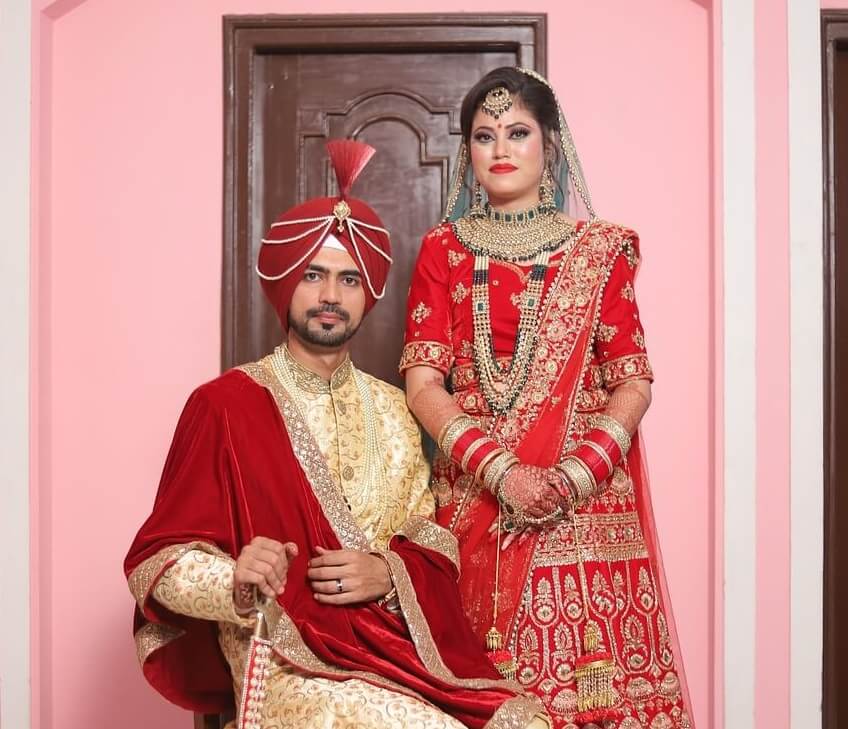
The primary consideration in any marriage in India, whether ‘arranged’ or the so-called ‘love marriages’ is the boy’s or his family’s earning capacity or social prestige. Social prestige is, by tradition, to be found amongst high-ranked government officers. However, if you seek social prestige along with money, you have to find a guy who is stinking corrupt from the first day he joins service.
Precisely for that reason, for most girls it does not matter much even if the man is downright ugly, repulsive or utterly dumb. Indians happen to be the bloody-most materialist people in the world. For all you know, the man might be much older than the woman; might have an obscene paunch; might be painfully skinny; might be extremely poor in his general knowledge or overall awareness of the world around him; might have acquired whatever little information he has from WhatsApp university and Instagram reels; might be alcoholic; might have a foul-smelling mouth; might be addicted to chewing tobacco or paan masala type things; or might not even be maintaining good personal hygiene (such as trimming his nails regularly, shaving his armpits or brushing in the night), but anything goes as long as he has money.
Indian women are great believers in the maxim of Deng Xiaoping, “It doesn’t matter if a cat is black or white, as long as it catches mice.” Men, on the other hand, basically want the convenience of regular sex in the institution of marriage. Since pre-marital sexual relationships are relatively rare in India and sex outside marriage is both costly and risky from a health point of view, most men, by the time they are of marriageable age, are terribly sex-starved. Basically any female would do for them. This grotesque trade—sex for men, financial security for women—is the true skeleton beneath the jewelled sarees and sherwanis of Indian weddings.
Love Marriages – The Great Indian Rope Trick
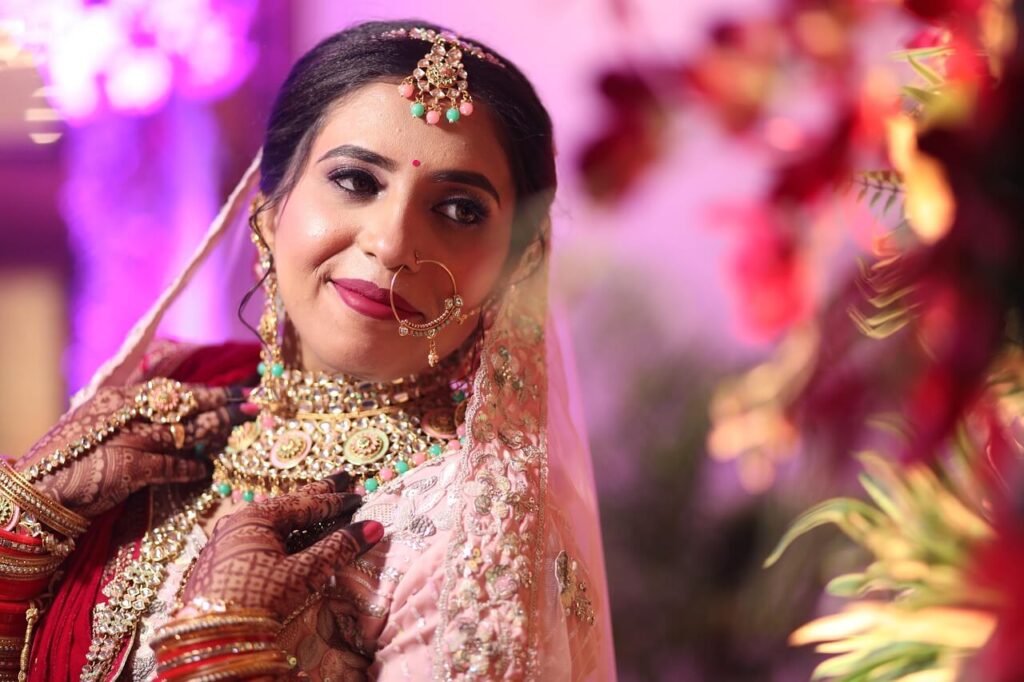
Essentially the same criteria apply for the so-called ‘love marriages’ also. For boys, it is plain and simple lust, which they delude themselves into believing is a mysterious thing called love. It is just biological passion which makes them confuse instinct with reason. Girls, on the other hand, are nothing but calculating—they are seldom misled by any emotional farce. They are basically hunting for financially secure boys and ambitious girls would go to any length to entice or seduce ‘suitable’ boys. That includes the bait of pre-marital sex also. It is basically entrapment. The idea is to ‘trap’ boys of good financial standing or earning capacity which, due to a thousand societal reasons, their families might not be able to hook in an ‘arranged marriage’. They know one thing with certainty: financial security will dictate their quality of life far more than romantic poetry. In my sufficiently long life-experience, I have yet to hear something similar to what the mother (Gertrude Morel) of the hero Paul Morel had told him after noticing his reluctance to marry because of his uncertain job status, “”If I’d been in love with a man, I’d have married him on his last week’s wages.” No, Indian girls do not believe in romance.

There is no real love in the philosophical sense of the terms and that is the reason of most of the so-called love marriages falling apart within a few years. Once hormones cool down and reality sets in, the mismatch becomes glaring. The myth of “love” evaporates, revealing what was always there: lust, strategy, and immaturity. Don’t kid yourself—love marriages are just arranged marriages in disguise, with a sprinkle of delusion. Ask any young Indian what “love” really means for lifelong commitment, and you’ll get blank stares.
In other words, Indian marriages, whether arranged or love, are basically compromises. They last as long as they last because Indians are too lazy to shake up their lives or bring turmoil in it. Indian unions aren’t blissful havens; they’re endurance tests where partners slog through hell because shaking things up requires effort they simply won’t expend. Divorce rates are low not because of superior values, but because Indians are masters of suffering in silence. For God’s sake do not believe for a moment in the romanticized bullshit Bollywood in general and the Badjatyas (of Hum Aapke Hain Kaun and Hum Saath Saath Hain type regressive films fame) in particular has been peddling—Indians are past masters in hiding their turmoil behind fake smiles at family functions.
Conditions in Which Marriages are Likely to Survive Better
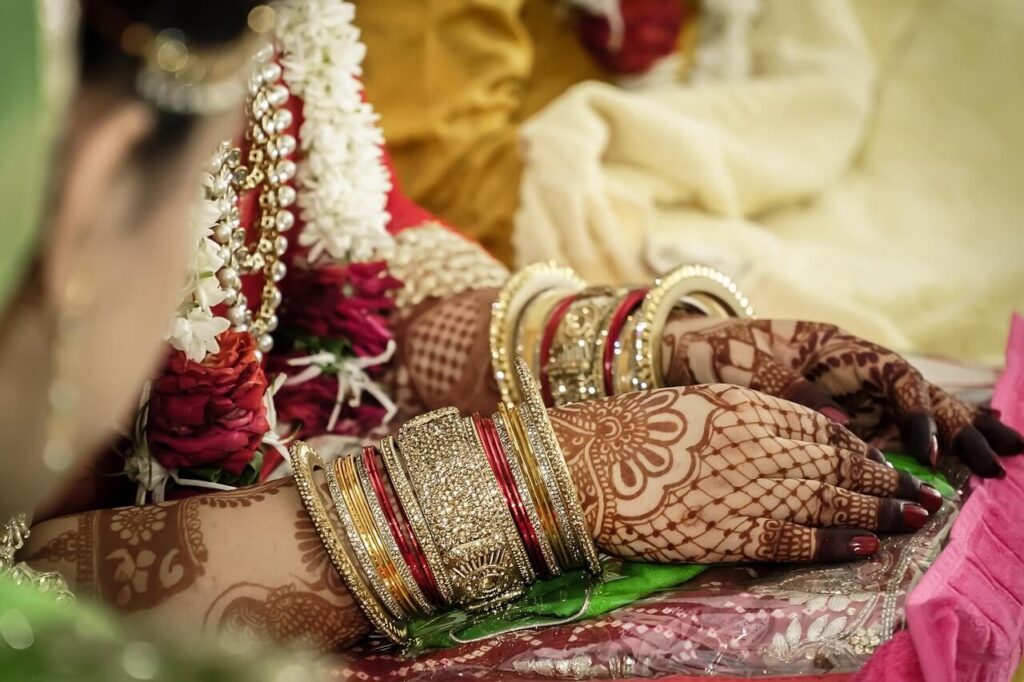
Men, often timid dolts, rely on wives for emotional crutches and household drudgery. Alone, they’d flounder; together, they muddle through. It’s not partnership—it’s co-dependency, where weakness props up weakness. Add kids to the mix, and escape becomes impossible: “Think of the children,” society chants, ignoring the toxic home they’re raised in.
The following combinations are therefore helpful in making a marriage survive better:
- Assertive or domineering (sarkash) wife—timid (dabboo) husband;
- Timid wife—domineering husband;
- Dumb wife—dumb husband; and
- Clever (street-smart) wife—dumb husband
Conversely, the following combinations have poor prospects of surviving:
- Assertive wife—assertive husband;
- Clever wife—clever husband
- Intelligent wife—intelligent husband
How to survive Stupid Marriages?
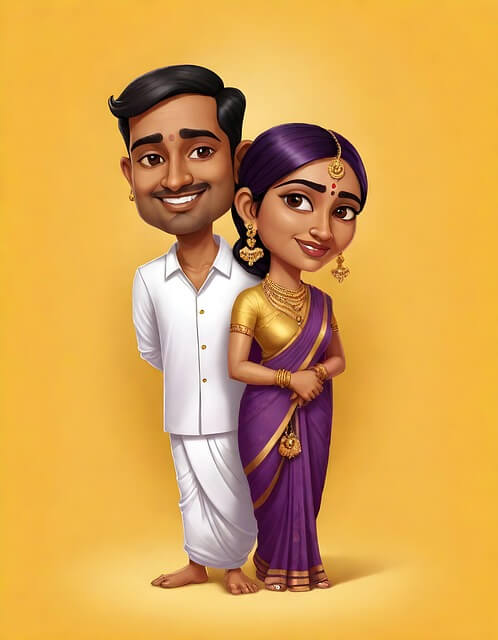
If you want to actually survive Indian marriage, you must do as Indians have always done. As Indians do with everything else—from bureaucracy to clogged sewers—there’s a way to survive without changing anything at all. Follow these steps, and your marriage will last:
- If you are unhappy, you are just “upholding sacred tradition.” Tell yourself, and everyone else, that compromise builds character.
- Remember, autonomy is a Western disease. True Indians outsource decision-making to the entire genealogical clan. Sit back, relax, and let both families dictate everything—from where you live to what colour curtains you buy.
- Never forget, ‘Log kya kahenge’. This simple mantra will earn you cheap admiration from elders for your “sacrifice.”
- Also never forget tow more mantras: “Adjust karna padta hai” and “Sab sahna padta hai”. Learn to translate agony into endurance points. It’s less therapy, more national sport.
- Lower expectations to zero everywhere—from the monthly income to performance in the nuptial bed to kids’ rank in the class.
- Immerse yourself in endless TV serials/OTT films (watch Pakistani or Turkish serials also after you exhaust the Indian ones), cricket matches or kitty/club parties or variations thereof, and you’ll never have to confront the unbearable truth of your mismatched souls. Be in the real or virtual company of duffers like you and you will be happy.
- De-intellectualize yourself completely; being intellectual in India is considered equivalent to having contracted a dirty venereal disease. Only those people can be happy who are dumb like others.
- Finally, whenever any stupid doubt creeps in (though if you are as dumb as most Indians are, no doubt will ever dare creep in your empty mind), douse it vehemently with family rituals, festivals, jewellery and exotic vacations (if you can afford), and, of course, the big, fat, Indian weddings, replete with food plates piled so high as to remind one of the pyramids of Giza.
Follow these nuggets of advice and the farce will become indistinguishable from life itself—and you’ll finally belong to the proud club of Indian “marital bliss.”
Sources of Cracks or Tensions in Marriages
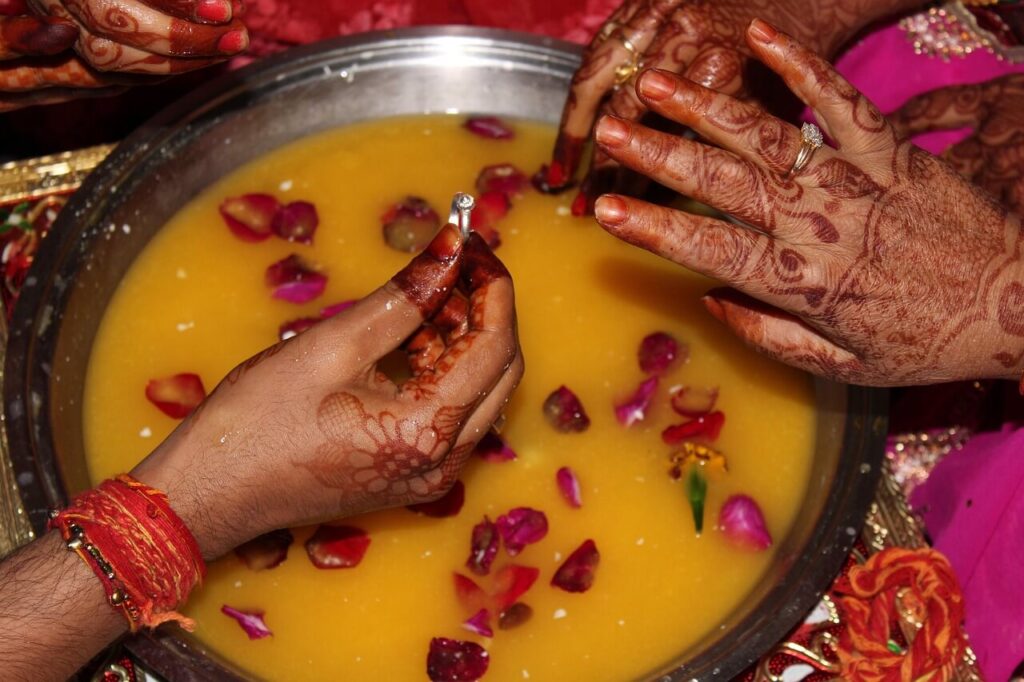
Basically, the problems arise when unrealistic expectations are shattered on the hard rock of reality. Actually, in Indian marriages, the very concept of compatibility either does not exist or is accorded the lowest priority. The myth of compatibility is not just missing; it is actively mocked. The idea that two independent individuals should choose to stay together out of mutual respect and companionship is derided as “Western nonsense.”
Though the sources of tension are myriad, I would list a few illustrative examples:
- The wife’s dissatisfaction with the man’s earnings and the resulting frustration, which manifests itself in a million forms.
- The wife’s reluctance to share the man’s responsibilities towards his parents and family even after marriage—most women present the men with a binary choice—that is, choose either me or your mother’s pallu, little realizing that marriage or having kids does not mean that the man could wash his hands off his responsibilities
- Wives using denial of sex as a bartering tool or weapon to pressurize the man into accepting their demands.
- The husbands expecting the wives to have supernatural energies—working if she is employed; doing all the domestic chores all day long; discharge every responsibility of the household from the kids to daily shopping; and yet manage to be a sex goddess in bed on demand.
Marriage, the Sanctimonious Farce
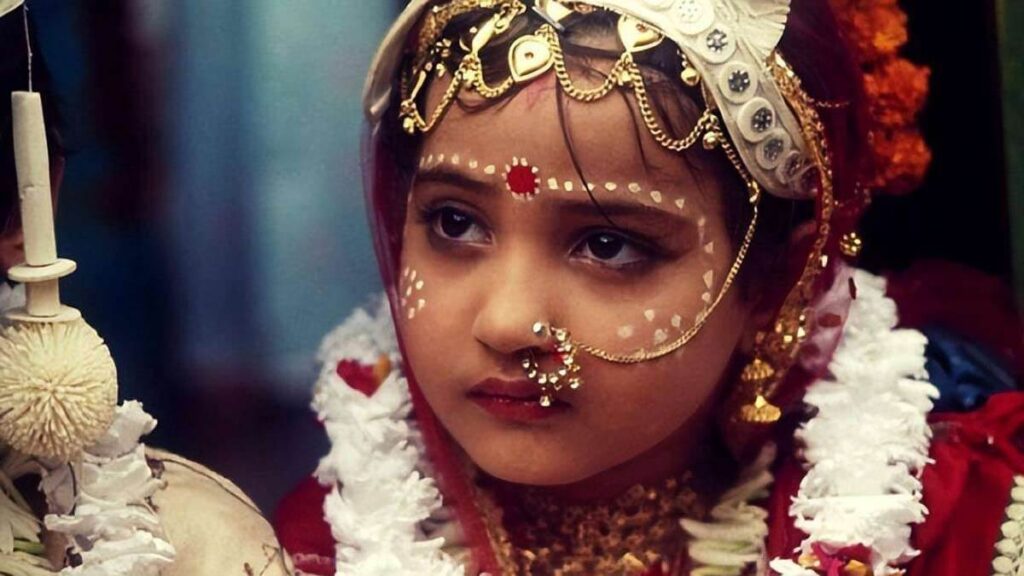
Indian marriages last because Indians are too indolent to disrupt the status quo. They’re compromises forged in apathy, sustained by fear, and glorified as virtue. This isn’t moral high ground—it’s a swamp of stagnation. The West’s higher divorces? At least they value happiness over endurance, compatibility over convenience. Indians, drop the pretensions. Your low divorce rate isn’t a crown; it’s a chain. Until you confront this cultural cowardice, your unions will remain farces, and your boasts, hollow echoes of denial.
One must be brutally honest: India’s low divorce rate is not a mark of success—it is a national badge of collective failure. It proves not the sanctity of relationships, but the suffocating inability to break free from dead structures. It proves not commitment, but resignation. It proves not love, but fear.


A very interesting read and a true reflection of society. I totally agree. The reason we don’t have revolutions. The crude phrase often quoted in the context of Indian marriages, “Sex is the price women pay for marriage, and marriage is the price men pay for sex,” holds true. I’ve observed a new phenomenon, although it’s challenging to confirm its prevalence without verified numbers. Here are my observations:
1. In marital disputes, the girl’s side often claims huge amounts as the cost of marriage, leading the boy’s side to opt for out-of-court settlements to avoid trouble. This practice appears to be prevalent in the upper-middle class and middle-middle class, despite the boy’s side having incurred more or equal expenses.
2. In the lower-middle class, partners tend to change more frequently, often resolving disputes without resorting to courts. In many cases, or the majority of cases, women take the lead. They have a more liberated life.
In the overall context, it’s possible that children play a crucial role in sustaining marriages. Nowadays, men appear to be more attached to children compared to the past, hence they endure difficult marriages for their sake. Women, of course, have been doing everything eversince…
The bold, brash, revolutionary-type men are more prone to change partners. It’s very true that timidity ensures long-lasting marriages; maybe we can camouflage timidity as being sensitive.